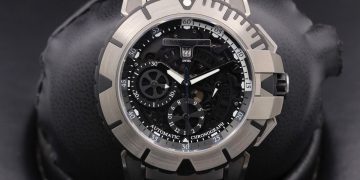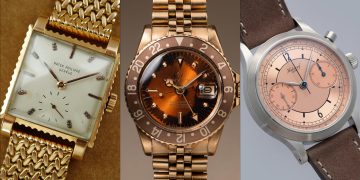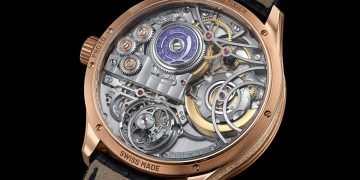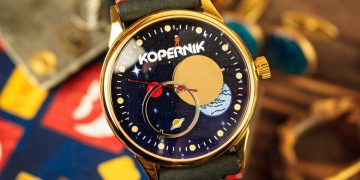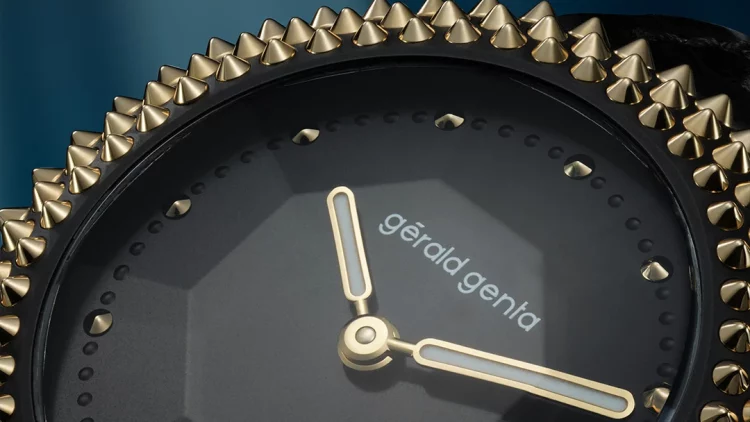1. Introduction: The Revolutionary Impact of Gerald Genta in Watchmaking
Gerald Genta is often hailed as one of the most innovative and visionary watch designers in the history of horology. His designs, most notably the Royal Oak for Audemars Piguet and the Nautilus for Patek Philippe, broke all the traditional conventions of watchmaking when they were introduced in the 1970s. But Genta’s legacy doesn’t just rest on these iconic models. He built a name for himself as a master of design, known for pushing the boundaries of craftsmanship, technology, and style. His influence stretches far beyond the watches he personally designed; it has shaped modern watchmaking and has defined the concept of the luxury sports watch.
In this comprehensive article, we explore the history, innovations, and legacy of Gerald Genta and his eponymous brand. We will examine the foundations of his career, the revolutionary watches he designed, and the cultural impact his timepieces have had on the world of luxury horology. We will also explore the unique design philosophy that made his watches stand out and how his creations remain relevant and desirable in the ever-evolving world of watchmaking.
2. The Early Life and Career of Gerald Genta
2.1 A Passion for Design and Art
Gerald Genta was born in 1931 in Geneva, Switzerland, a city renowned for its centuries-old watchmaking tradition. From an early age, he showed a natural aptitude for art and design. However, his path to becoming a watchmaking legend was not immediately clear. Initially, he studied in a more traditional field of fine arts but soon realized his true passion lay in designing watches. His understanding of artistic expression coupled with a deep interest in mechanical precision made watchmaking a perfect marriage of his talents.
2.2 Starting His Career: From Freelance to Icon
In the 1950s, Gerald Genta began his career in the watchmaking industry, initially working for various Swiss watch companies. However, his ambitions were greater than working for someone else, and by the 1960s, he had opened his own independent studio. His early work was marked by highly detailed and innovative designs that showcased a unique blend of art deco, modernism, and a deep respect for traditional Swiss craftsmanship.
In the beginning, Genta worked largely on designs for other brands, contributing to the creation of some of the most famous luxury watches of the time, but it wasn’t until the 1970s that he began to develop his own signature style—something that would become synonymous with his name.
3. The Revolution: The Birth of Iconic Timepieces
3.1 The Audemars Piguet Royal Oak: A Game Changer in Design
While Genta’s independent brand would later gain tremendous success, his breakthrough moment came in 1972 when he was commissioned by Audemars Piguet to design a new kind of luxury sports watch. At the time, most luxury watches were traditional, formal timepieces crafted from precious metals, with small, delicate cases and thin designs. The world was not yet ready for boldness in a luxury watch.
However, Genta’s design for the Royal Oak broke all conventions. Its octagonal bezel, integrated steel bracelet, and brutalist style were a radical departure from the elegance of traditional Swiss watches. The stainless steel case, a material traditionally considered utilitarian, was used for its luxury appeal, and the watch’s robust yet sophisticated design made it instantly iconic.
- Legacy of the Royal Oak: The Royal Oak was initially met with skepticism but eventually became one of the most influential luxury watches ever created. It helped define the luxury sports watch category and shifted the focus from classic dress watches to more contemporary, functional, and robust designs.
3.2 The Patek Philippe Nautilus: Defining Luxury with a Twist
Just a few years later, Genta’s design for Patek Philippe’s Nautilus followed a similar vein of innovation. Much like the Royal Oak, the Nautilus was crafted from stainless steel and featured an octagonal bezel. However, Genta took things a step further by incorporating porthole-inspired aesthetics, mimicking the shape of ship’s ports, which introduced a fresh, modern, and masculine look into the traditional, reserved world of Patek Philippe.
The Nautilus became synonymous with luxury sports elegance, bridging the gap between casual and formal timepieces. Its iconic design would later be recognized as one of the most influential in watchmaking history. The Nautilus, alongside the Royal Oak, contributed to the redefinition of what a luxury watch could be.
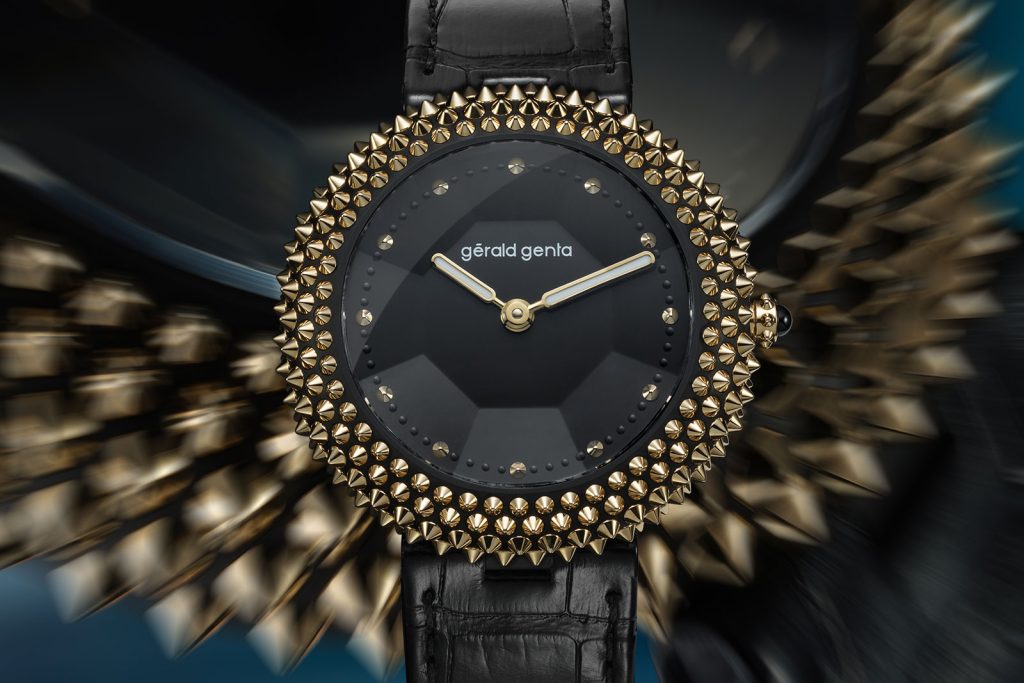
4. Gerald Genta’s Eponymous Brand: Pushing Boundaries
4.1 Founding Gerald Genta SA
While Genta’s design collaborations with high-end brands were groundbreaking, his most personal achievement came in the late 1980s when he founded his own brand: Gerald Genta SA. His vision was to combine artistic design, technical innovation, and luxury into timepieces that embodied his personality and philosophy.
Genta’s watches were known for their unique complications, avant-garde design, and high level of precision. Over the years, Gerald Genta SA produced some of the most memorable limited-edition timepieces, many of which featured sophisticated complications like perpetual calendars, minute repeaters, and tourbillons.
4.2 The Gerald Genta “Arena” Collection
Among the most notable creations from the Gerald Genta brand was the Arena collection, which brought a new level of bold design and intricate craftsmanship to the table. The Arena was characterized by its oversized case and unconventional shapes, emphasizing Genta’s philosophy of creating watches that were not just timekeepers but art objects.
- The Arena Metasonic: One standout model was the Arena Metasonic, a sonic-powered watch that featured advanced technology capable of maintaining its power reserve without the need for a traditional winding mechanism. It was emblematic of Genta’s ability to blend avant-garde design with cutting-edge technology.
4.3 Collaborations and Limited Editions
Genta was also known for his collaborations with high-end jewelry houses and limited edition pieces. These watches often pushed the boundaries of traditional watchmaking with unusual materials, bold designs, and unconventional features. Whether it was incorporating precious gemstones, creating intricate skeleton dials, or experimenting with unique case shapes, Genta’s pieces were always ahead of their time.
5. Gerald Genta’s Design Philosophy: Innovation Meets Tradition
5.1 The Balance of Art and Engineering
One of the key reasons Gerald Genta became so successful was his ability to balance artistic design with engineering precision. He always believed that a watch should not only be an instrument for telling time but also a reflection of the owner’s personality and lifestyle. His designs were always ahead of their time, yet they remained rooted in the tradition of Swiss watchmaking.
- The Power of Aesthetics: Genta was a true artist in the sense that he viewed a watch as more than just a mechanical object—it was a piece of art, something that should elicit emotion and connection. This deep philosophy of design set him apart from other watchmakers of his time.
5.2 Pushing Boundaries with New Materials
Genta was always fascinated by the potential of new materials. He embraced innovations in stainless steel, titanium, ceramics, and precious metals. His willingness to experiment with these materials set the stage for modern luxury watch brands to push the limits of design and functionality.
- Stainless Steel as a Luxury Material: Genta’s use of stainless steel in high-end luxury watches was revolutionary. Previously, steel was only associated with tool or sports watches, but Genta elevated it to the level of luxury with his designs, particularly in the Royal Oak and Nautilus.
6. Gerald Genta’s Legacy: A Lasting Influence on Modern Horology
6.1 The Enduring Popularity of Genta’s Designs
Gerald Genta passed away in 2011, but his influence on the world of horology continues to be felt. The Royal Oak and Nautilus remain two of the most desirable and valuable watches in the world. His independent brand, Gerald Genta SA, continues to produce timepieces under the Genta brand, keeping his legacy alive in modern watchmaking.
- A Modern Icon: Today, the Gerald Genta brand is owned by Moynat, but the essence of Genta’s vision is still evident in their modern designs. Genta’s emphasis on luxury, innovative complications, and artistic expression has shaped the direction of high-end watchmaking for generations.
6.2 The Resurgence of Gerald Genta’s Influence in Watch Collecting
In recent years, there has been a resurgence in the appreciation for Gerald Genta’s work. Collectors are increasingly recognizing the value of vintage Genta designs, whether it’s the iconic Royal Oak, the Nautilus, or one of his personal creations from his eponymous brand.
7. Conclusion: A Master of Design and Innovation
Gerald Genta’s legacy as a watch designer and innovator is undeniably monumental. He redefined what it meant to create a luxury sports watch and his designs continue to inspire modern watchmakers and collectors alike. From his revolutionary work with Audemars Piguet and Patek Philippe to his own independent brand, Genta’s impact on the watchmaking industry is still felt today.
Owning a Gerald Genta timepiece is more than just owning a luxury watch; it’s about owning a piece of horological history, a symbol of innovation, and a testament to a designer who changed the way the world views timepieces. Gerald Genta’s legacy is etched in every iconic design and precision-engineered movement, ensuring his place as one of the most important figures in watchmaking history.



